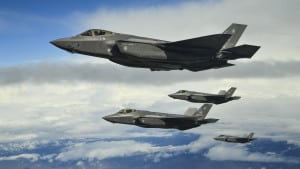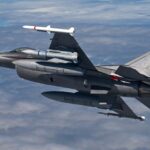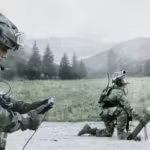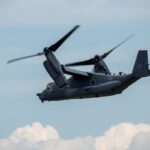
The first Europe-bound training deployment of the conventional takeoff and landing F-35A Joint Strike Fighter was made official Saturday when several of the jets touched down at Royal Air Force base Lakenheath, England.It is the aircraft’s first overseas training deployment to Europe, though short-takeoff and vertical landing (STOVL) versions of the aircraft flew across the Atlantic to participate in the Farnborough Air Show in 2016. The F-35As are from the 34th Fighter Squadron, 388th Fighter Wing and the Air Force…

 By
By 











